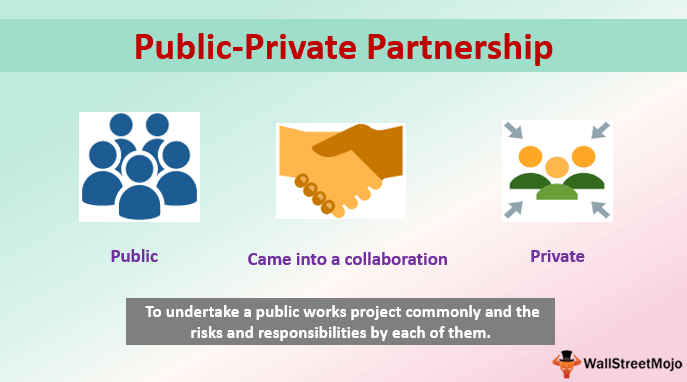
P P P – Public Private
Partnership
Related
articles on PPP
VGF
HyderabadMetro
DedicatedFreight Corridor
IRSDC
PrivateTrains
SPV
EPC
Govt of India Website on PPP
Introduction :
·
An innovative way of delivering modern, high
quality public services and promoting the country’s competitiveness.
·
Currently, PPP occupies the page-3 status in the
news.
What is:
·
A long term project between the Government and a
private sector company for delivering an infrastructure service on payment of
user charges.
·
Partnership
/ collaboration between a Government and Private firm
·
Used
to finance, build & operate public projects
Why require:
·
Due
to resource crunch, Governments are not able to undertake capital intensive Public
projects such as Roads, Bridges, Metro transport, Airports, Sea ports, Power
services etc.
·
However
Private players might be interested in funding such Public projects subject to
receiving the operating profits during the life time of the Project.
·
Significant deficit in the availability of
physical infrastructure that impacts economic development.
·
Development of infrastructure requires large
investments that cannot be undertaken out of public financing alone, and that
in order to attract private capital as well as the techno-managerial
efficiencies associated with it, the Government is committed to promoting
Public Private Partnerships (PPPs) in infrastructure development.
Salient
features:
·
Normally the contract periods of 25 years or
longer.
·
Role of Private player: Designing, Build, Finance, Operating and
Transfer –DBFOT
·
Role of Public player: Defining and monitoring
the Project as per compliance.
·
Risks are distributed between the Public and
Private partners according to the ability of each to assess
·
The infrastructure projects may not always be
financially viable because of long gestation periods and limited financial
returns. Hence, the Govt provides
incentives (in India, VGF – Viability Gap Fund ) to the Private player like
subsidies, land, tax benefits etc.
·
Typically, a private sector consortium forms a
special company called a special purpose vehicle (SPV) to build and maintain
the asset. The consortium is usually made up of a building contractor, a
maintenance company and a bank lender. It is the SPV that signs the contract
with the government and with subcontractors to build the facility and then
maintain it.
·
Risk sharing – Private sectors managing
commercial risks, construction risks, financial risks. Whereas Govt managing Political risk and land
acquisition.
·
Model Concession Agreement (MCA) - The detailed
modalities of the contract between the private player and the Government. This
document plays a pivotal role in the implementation of the project. It clearly
delineates the risks to be shared by the private player and the government and
spells out the formula of sharing of the revenue among other important details
Types of PPP
|
BOO
|
Build, Own &
Operate
|
|
BOT
|
Built, Operate &
Transfer
|
|
BOOT
|
Build, Own, Operate
& Transfer
|
|
BOOST
|
Build, Own, Operate,
Share & Transfer
|
|
DBFM
|
Design, Build,
Finance & Maintain
|
|
DBFMO
|
Design, Build,
Finance, Maintain & Operate
|
|
DBFOT
|
Design, Built,
Finance, Operate & Transfer
|
|
O & M
|
Operation &
Maintenance
|
|
OMDA
|
Operations,
Management & Development Agreement
|
Advantages:
·
PPP work well when Private sector technology and
innovation combine with Government player’s subsidies, tax benefits etc
·
Provide better public services
·
Creating good infrastructure facilities
Examples in
India:
·
PPPAC – Public Private Partnership Appraisal
Committee
·
Total PPP projects cost in India - Rs. 25 Lakhs Crores (Nearly 2000 Projects)
·
Hyderabad Metro Rail project – Rs. 12000 Crores
·
Teesta Power Project – Rs. 6000 Crores – BOO
·
Dhamra
Port, Odisha – Rs. 10000 Crores – BOOST
·
Delhi Internation Airport – Rs. 12000 Crores -
OMDA
·
Delhi –
Meerut Expressway – Rs. 10000 Crores – DBFOT
·
Container terminal at JNPT – Jawaharlal Nehru
Port Trust, Maharashtra– Rs. 6700 Crores -O & M
Examples of PPP
in Indian Railways:
·
In India, Noida Toll Bridge was the first
successful example of a Public Private Partnership in the transportation
sector.
·
Redevelopment of New Delhi Railway Station – Rs.
8,500 Crores
·
Redevelopment Gwalior, Nagpur, Amritsar &
Sabarmati Railway Stations - Rs. 1300 Crores
·
Catering, Food plazas, Budget hotels
·
SPV – PRCL (Pipavav Railway Corporation Limited)
- Surendranagar-Pipavav new line.
·
K – RIDE - A Joint Venture named K-RIDE (Rail
Infrastructure Development (Karnataka) Limited
·
Wagon Investment Scheme - WIS
·
Parcel Services
·
Operation of Container trains
·
Private sidings
·
ICDs – Inland Container Depots
·
Railside Warehouses
·
Dedicated Freight Corridor
****



